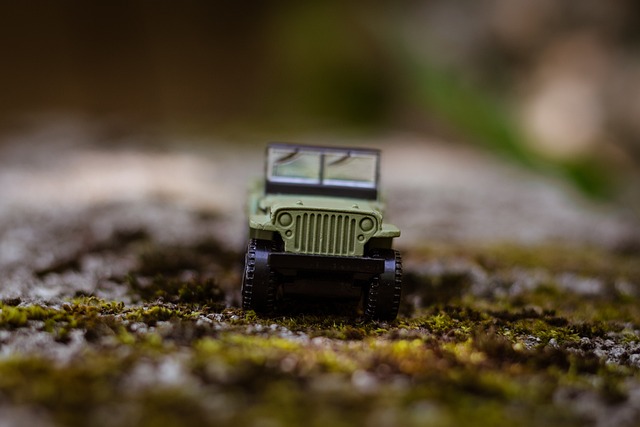RGV Bedliners provide crucial protection for off-road vehicles against terrain damage, preserving value and longevity. They safeguard against scratches, dents, rust, and heavy loads, with materials like plastic, rubber, or composite fabrics. Regular inspections, maintenance using mild soap and protectors, and addressing wear early are essential for optimal performance and durability of RGV Bedliners.
In the rugged world of off-road adventures, a well-maintained vehicle is your most reliable companion. This article delves into the essential practice of inspecting and diagnosing off-road vehicles, with a specific focus on RGV Bedliners—a crucial element for protection against harsh terrain. We’ll guide you through understanding these bedliners, conducting comprehensive inspections, identifying common issues, and offering maintenance tips to ensure your RGV performs optimally. By mastering these skills, you’ll be well-equipped to navigate any trail.
- Understanding RGV Bedliners: Protection for Off-Road Vehicles
- Comprehensive Inspection: Key Components to Assess
- Common Off-Road Vehicle Diagnoses and Troubleshooting
- Maintenance Tips for Optimal RGV Bedliner Performance
Understanding RGV Bedliners: Protection for Off-Road Vehicles
Off-road vehicles face a lot of wear and tear, from rugged terrains to extreme weather conditions. This is where RGV Bedliners come into play as an essential protective layer for these tough machines. These bed liners are specifically designed to safeguard the vehicle’s cargo area or ‘bed’ from damage caused by the elements, rough surfaces, and heavy loads.
RGV Bedliners offer a durable solution, often made from robust materials like plastic, rubber, or composite fabrics. They line the floor and walls of the off-road vehicle’s bed, preventing scratches, dents, and rust. This protection is crucial for maintaining the vehicle’s value and ensuring its longevity, especially when used for various outdoor activities or commercial purposes. With proper care, these liners can withstand years of harsh conditions, making them a smart investment for off-road enthusiasts.
Comprehensive Inspection: Key Components to Assess
A comprehensive off-road vehicle inspection goes beyond a quick visual assessment. It involves a meticulous evaluation of various critical components to ensure optimal performance and safety, especially when navigating rugged terrains. One essential area to focus on is the vehicle’s underbody protection, such as RGV bedliners. These liners not only safeguard the bed of your off-roader against scratches, dents, and rust but also play a vital role in preventing damage to other sensitive parts below.
During the inspection, mechanics should carefully examine the condition of these bedliners, checking for signs of wear, cracks, or holes. Proper maintenance of underbody components is crucial as they can impact overall vehicle stability and handling. Other key elements to assess include the state of the suspension system, exhaust pipes, fuel lines, and tires—all vital for a smooth and secure off-road experience.
Common Off-Road Vehicle Diagnoses and Troubleshooting
Many off-road vehicles, especially those equipped with rugged terrain packages, can present specific diagnostic challenges due to their specialized nature. Common issues often involve drivetrain components, suspension systems, and exhaust systems designed to handle demanding off-road conditions. For instance, repairs on RGV bedliners, which are sturdy protective coatings for off-road vehicles’ undercarriages, may be necessary after encounters with sharp rocks or uneven terrain.
Troubleshooting these problems requires a systematic approach. Regular maintenance checks, including fluid levels and tire pressure monitoring, can prevent major breakdowns. Advanced diagnostic tools can scan for error codes and identify components in need of service or replacement. Off-road enthusiasts should familiarize themselves with basic vehicle systems to interpret these findings effectively.
Maintenance Tips for Optimal RGV Bedliner Performance
Regular maintenance is key to keeping your RGV bedliner in top condition, ensuring maximum performance and longevity. Start by conducting routine inspections, checking for any signs of damage, wear, or loose components. Addressing issues early can prevent more serious problems down the line.
Keep your bedliner clean and free from debris using mild soap and water. Avoid harsh chemicals which could damage the surface. Additionally, applying a suitable protector or sealant recommended by the manufacturer can safeguard against rust, stains, and other environmental factors, enhancing its durability. Remember, proper maintenance not only enhances the aesthetics but also contributes to the overall functionality of your RGV bedliner.
Off-road vehicles demand robust protection, especially in challenging terrains, which is where RGV Bedliners prove invaluable. By understanding the critical components of an off-road vehicle inspection and adopting regular maintenance practices, you can ensure your vehicle’s longevity. This comprehensive guide on RGV Bedliner care, coupled with common diagnosis insights, equips you to navigate off-road adventures with confidence, knowing your vehicle is prepared for any challenge.
